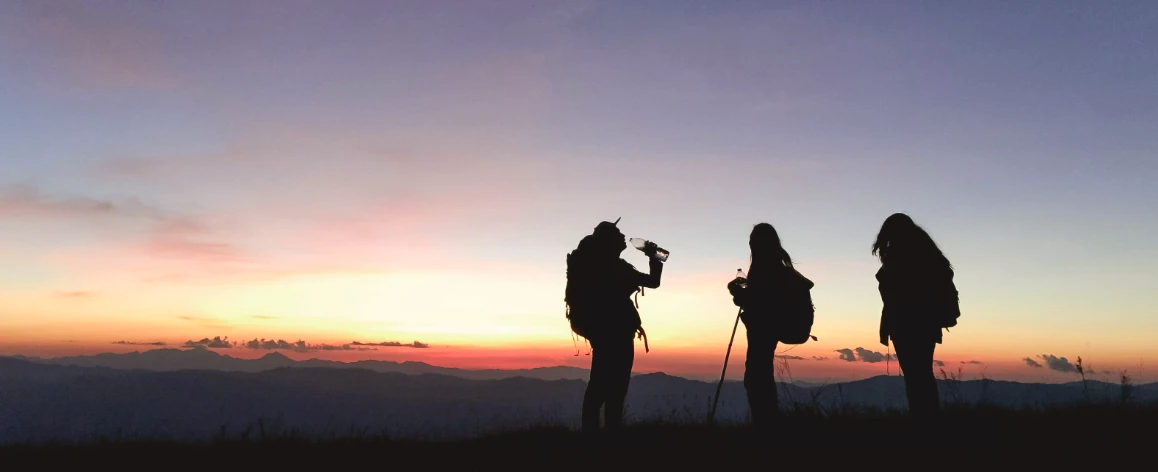Did you know that more than 45 million Americans hike each year? Whether you’re a novice or an expert, hitting the trail can be an exhilarating experience. However, ensuring your safety is crucial for a fun and incident-free adventure.”
Hiking is a fantastic way to connect with nature, get some exercise, and enjoy the great outdoors. However, it’s essential to prioritize safety to ensure a fun and incident-free adventure. This guide will cover crucial safety tips for hikers of all experience levels, helping you prepare, navigate, and enjoy your hike safely.

Preparing for Your Hike
Before you hit the trail, thorough preparation is key. Start by researching your chosen trail to understand its length, difficulty, and any potential hazards. Websites, hiking forums, and trail guides are excellent resources.
Check the weather forecast for the day of your hike. Weather can change rapidly, especially in mountainous regions, so it’s crucial to be prepared for all conditions. Let someone know your hiking plans, including your expected return time, so they can alert authorities if something goes wrong.
Packing Essentials
Packing the right gear can make or break your hiking experience. Here are some essentials:
- Appropriate Clothing and Footwear: Wear moisture-wicking clothes and sturdy, comfortable hiking boots. Dress in layers to adjust to changing weather conditions.
- Navigation Tools: Carry a map, compass, and a GPS device or a fully charged smartphone with offline maps.
- First Aid Kit: A basic first aid kit should include bandages, antiseptic wipes, pain relievers, and any personal medications.
- Sufficient Water and Food Supplies: Bring enough water to stay hydrated and energy-boosting snacks like nuts, dried fruits, and granola bars.
Understanding Trail Etiquette
Good trail etiquette ensures everyone can enjoy the hiking experience:
- Leave No Trace Principles: Pack out all trash, stay on marked trails, and avoid picking plants or disturbing wildlife.
- Respecting Wildlife: Observe animals from a distance and never feed them. Feeding wildlife can harm their health and make them reliant on human food.
- Yielding to Other Hikers: Uphill hikers have the right of way. Step aside to let them pass, and always be courteous.
Navigation and Staying on the Trail
Staying on the marked trail reduces your risk of getting lost and minimizes environmental impact. Use maps and GPS to navigate, and familiarize yourself with trail markers. If you get lost, stay calm. Retrace your steps if possible, and use your navigation tools to find your way.
Hydration and Nutrition
Hydration is vital when hiking. Drink water regularly, even if you don’t feel thirsty. Dehydration can sneak up on you, especially in hot weather. Bring high-energy foods that are easy to eat on the go, like trail mix and energy bars.
Weather Considerations
Weather can change quickly, so it’s important to dress in layers and be prepared for sudden changes. Carry a waterproof jacket, hat, and gloves, even if the forecast is clear. If you encounter a storm, find shelter and wait it out.
Wildlife Encounters
Encountering wildlife can be a highlight of your hike, but it’s crucial to stay safe:
- Identifying Common Wildlife: Learn about the animals you might encounter on your trail.
- How to Safely Observe Animals: Use binoculars to watch animals from a safe distance.
- Dealing with Dangerous Animals: Know what to do if you encounter potentially dangerous wildlife like bears or snakes.
First Aid and Emergency Situations
Knowing basic first aid can save lives:
- Basic First Aid Knowledge: Learn how to treat blisters, cuts, and sprains.
- Handling Common Injuries: Be prepared to treat minor injuries and know when to seek help.
- What to Do in an Emergency: Carry an emergency whistle and know the emergency contact numbers for the area.
Physical Preparation and Fitness
Being physically prepared for your hike will make it more enjoyable and safer:
- Training for Hikes: Start with shorter, less strenuous hikes and gradually increase your distance and difficulty.
- Importance of Stretching: Stretch before and after your hike to prevent injuries.
- Building Endurance: Regular exercise will improve your stamina and overall hiking performance.
Mental Preparation
Hiking is as much a mental challenge as a physical one:
- Importance of a Positive Mindset: Stay positive and focused.
- Coping with Fatigue and Stress: Take breaks, enjoy the scenery, and don’t push yourself too hard.
Group Hiking Safety
Hiking with a group adds an extra layer of safety:
- Staying Together: Keep the group together and look out for each other.
- Assigning a Leader: Choose a leader to set the pace and make decisions.
- Communicating Effectively: Use clear signals and check in regularly.
Night Hiking Safety
Hiking at night requires extra precautions:
- Necessary Equipment for Night Hiking: Bring a headlamp or flashlight with extra batteries.
- Tips for Staying Safe in the Dark: Stick to familiar trails, stay together, and move slowly.
Seasonal Hiking Tips
Different seasons present unique challenges:
- Summer Hiking Safety: Protect yourself from the sun, bring extra water, and hike early in the day.
- Winter Hiking Safety: Dress in layers, be aware of ice and snow, and bring extra gear.
- Spring and Fall Considerations: Watch for muddy trails and rapidly changing weather.
Remember, preparation is the key to a great hiking experience. So, pack your gear, respect nature, and hit the trail with confidence. Happy hiking!